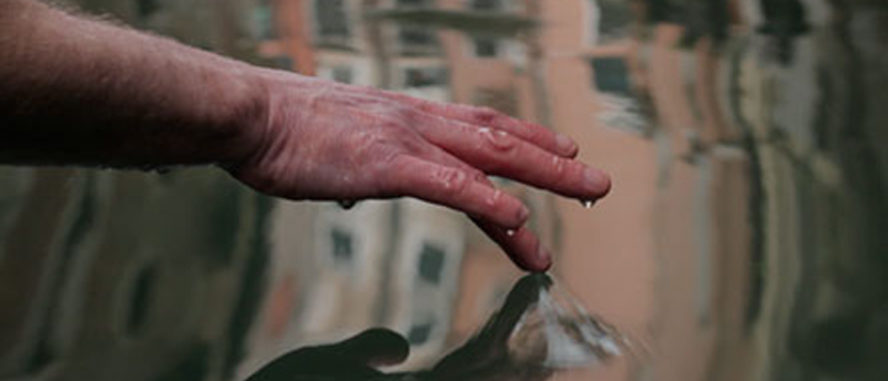It’s the summer festivals season and one of the world’s most prestigious art events of the year, the Venice Biennale is in full swing right now. In 2019 it is curated by the esteemed Ralph Rugoff, who is currently the director of the Hayward Gallery in London.
Over the years we’ve been privileged to have the official books for various artists who have represented our Isles in the ‘pavilions’ at Venice, and this year we’re thrilled to have Wales’ contribution to the Biennale on our list. Sean Edwards proudly represents his native country in the Welsh Pavilion. More of a ‘reader’ (than a standard catalogue), his new publication Undo Things Done (Cymru yn Fenis / Wales in Venice 2019) features numerous writers and presents itself as a poetic inquiry into place, politics and class, intertwined with personal histories. This book is co-published by our friends, the historic and renowned contemporary arts centre Bluecoat in Liverpool, and the fabulous community arts centre Tŷ Pawb in Wrexham, North Wales.
Sean Edwards (2019) in Art Review, talks about the importance of his home country being represented in Venice: “As an emerging artist when I returned after studying away it was hugely important for me seeing Wales taking part on the international art stage, and I’d hope that this still holds true for the fantastic young artists who have chosen to stay and practice in Wales.”
In this sunny iteration of our blog we re-discover the fine publications (many published by the British Council) produced by the award-winning artists who formerly graced the British pavilions. Here they are: introduced by a quote from each artist themselves…
Rachel Whiteread (1997) in The Guardian, talks about women’s representation in the Biennale: “I’ve always seen myself as an artist, rather than as a female artist. On the other hand, only two and a half women have represented Britain at the Venice Biennale: me, Tracey [Emin] and, a long time ago, Bridget Riley […] That’s quite unbelievable.”
Mark Wallinger (2001) on the Hauser & Wirth website video, talks about his concept for creating his opening piece: “I came up with the notion of making a trompe-l’œil of the Pavilion in front of the pavilion […] So, from a distance it did fool the eye, you didn’t see anything amiss and then as you gradually approached it you realised it was a photograph of the very thing behind it. So you enter the pavilion first through an illusion of the pavilion.”
Tim Davies (2011) on the British Council’s YouTube channel, talks about one of his main film pieces: “Drift was kind of a memory of a first time in a boat or something. You know… this kind of nonchalant… sort of just skimming the water playfully. But at the same time this notion of seeing in the water this evasive, elusive city which you kind of know so well and yet you never really know it.”
Steve McQueen (2009) in The Telegraph, talks openly in his irreverent style: “It’s great to be asked. But I’m not going to polish my shoes and wear a tie. I’ll just do what I normally do.”
Tracey Emin (2007) in The Guardian, talks about her surprise in being selected: “I knew that I was a contender because I was the right age and a woman. And they needed a woman because there are so many good female artists in Britain and they’ve only ever had two […] But I didn’t think I’d get it…”
Chris Ofili (2003) in the Independent, talks about his work The Upper Room: “It was important for the space to feel akin to a space of worship. I wondered if that was possible, and whether paintings could enhance that feeling.”
Can you hear Venice beckoning?!
Photo credit: film still from Drift (2011) by Tim Davies


